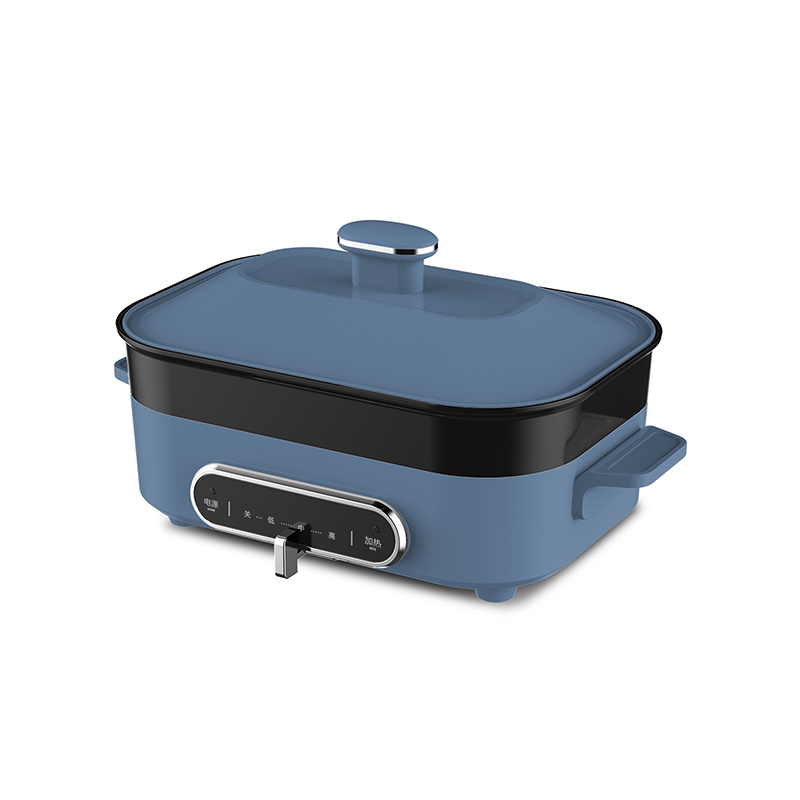Smokeless grills incorporate a sophisticated airflow system that is key to their smoke-reducing capabilities. This system typically includes a powerful, yet quiet, integrated fan designed to actively draw smoke away from the cooking surface. The fan works by creating a controlled airflow that captures and channels the smoke through the grill's internal ventilation system. In some designs, the smoke is passed through a specialized filter that traps particulate matter and odors, further reducing the amount of visible smoke and airborne grease. This continuous extraction process not only minimizes smoke but also helps to reduce cooking odors, making the grill ideal for indoor environments where ventilation might be limited.
Unlike traditional grilling methods that rely on direct heat from open flames or electric coils, many smokeless grills utilize infrared heating elements. Infrared technology operates by emitting heat in the form of infrared radiation, which is absorbed directly by the food rather than by the surrounding air. This method of cooking significantly reduces the amount of hot air circulating around the food, which in turn minimizes the likelihood of fats and juices vaporizing into smoke. Infrared grills are designed to reach high temperatures quickly and evenly, allowing for efficient cooking while preventing the burning of drippings that would otherwise contribute to smoke production. This technology is especially effective in achieving a seared finish on meats while maintaining a clean, smoke-free environment.
The critical feature in the design of smokeless grills is the inclusion of a well-engineered drip tray. Positioned directly beneath the cooking surface, the drip tray is responsible for capturing excess fats, oils, and juices that are released as food cooks. These liquids are channeled away from the heat source into the tray, preventing them from coming into contact with the hot elements where they could burn and generate smoke. In some models, the drip tray is filled with water, which cools the drippings and further inhibits smoke production. The tray is typically removable and dishwasher-safe, allowing for easy cleanup and maintenance. The efficient management of grease and drippings not only reduces smoke but also contributes to healthier cooking by reducing the amount of fat that remains in contact with the food.
The cooking surface of a smokeless grill is usually coated with a high-quality, non-stick material, such as ceramic or Teflon. This non-stick coating plays a significant role in reducing smoke by preventing food from adhering to the grill surface. When food sticks, it tends to burn, and the burnt residues are a primary source of smoke. The non-stick surface ensures that food can be easily flipped and removed without leaving behind charred remnants. Additionally, the non-stick coating simplifies the cleaning process, reducing the accumulation of burnt-on residues that could contribute to smoke in future cooking sessions. Over time, this feature helps maintain the grill's smokeless performance and extends its lifespan.
Precision in temperature control is another crucial aspect of smokeless grills that helps reduce smoke production. These grills are equipped with adjustable temperature settings that allow users to cook food at the optimal heat level for different types of dishes. By avoiding excessively high temperatures, the grill prevents oils and fats from reaching their smoke points, which is the temperature at which they begin to break down and produce smoke. The ability to control the cooking temperature precisely also enables users to achieve desired cooking results, such as searing, without the risk of burning the food or generating excess smoke. Advanced models may include digital temperature displays and preset cooking modes, enhancing user control and ensuring consistent, smoke-free cooking experiences.



 English
English 中文简体
中文简体 English
English 中文简体
中文简体
















